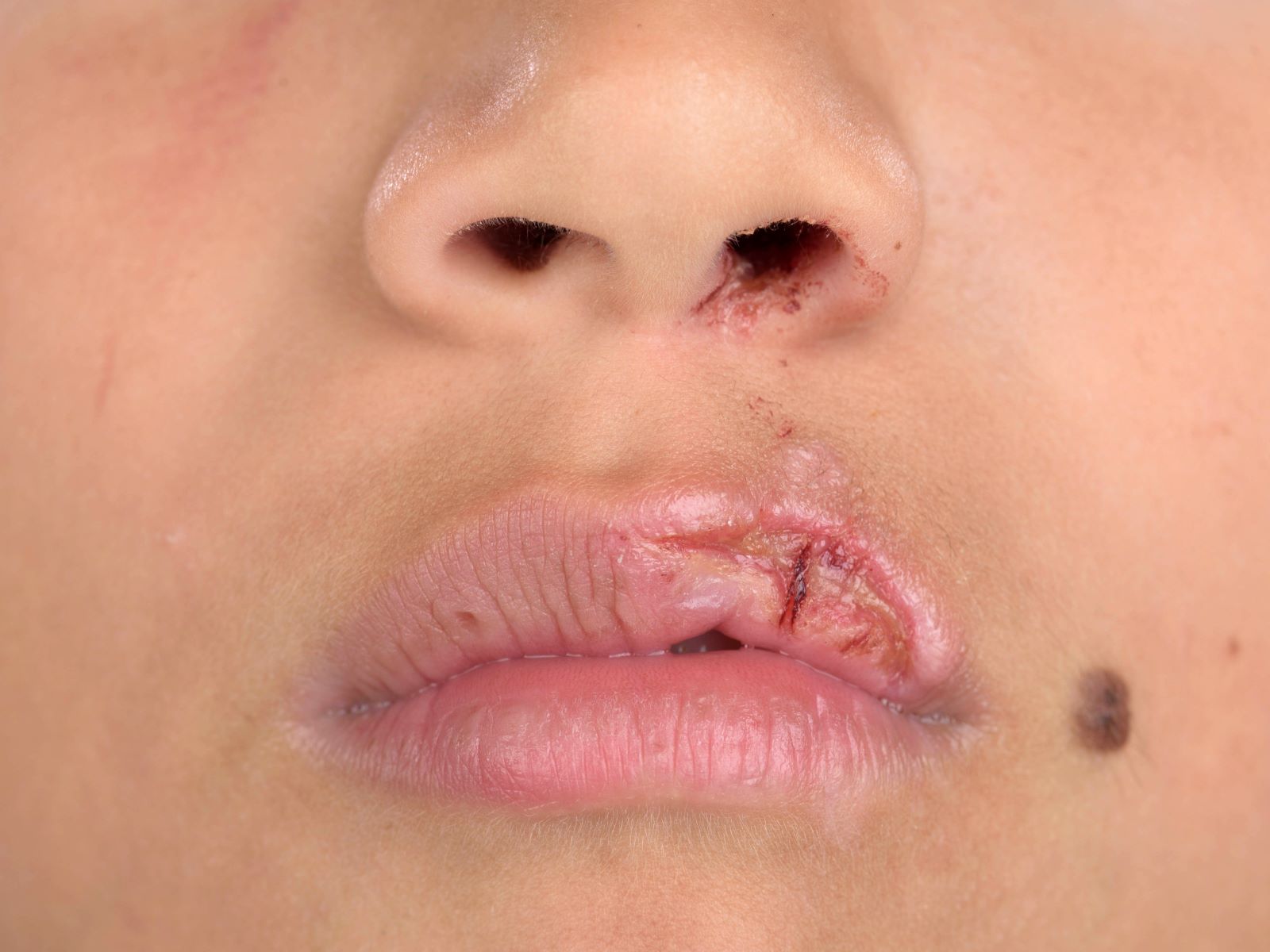
Trigeminal Trophic Syndrome (TTS) is a rare neurological disorder that affects the trigeminal nerve, leading to severe facial pain, numbness, and ulcerations. What causes TTS? The condition often arises after damage to the trigeminal nerve, which can occur due to surgery, trauma, or infections. This damage disrupts normal sensation, causing patients to scratch or rub their faces excessively, resulting in sores and ulcers. Who is at risk? While anyone can develop TTS, it is more commonly seen in middle-aged and older adults. How is it treated? Treatment typically involves managing symptoms through medications, protective dressings, and sometimes surgery. Understanding TTS is crucial for those affected and their caregivers, as early diagnosis and intervention can significantly improve quality of life.
Key Takeaways:
- Trigeminal Trophic Syndrome (TTS) is a rare neurological disorder causing facial pain and ulcerations, often misdiagnosed due to its rarity and similarity to other conditions.
- Understanding TTS symptoms, causes, and support resources is crucial for effective management, including medication, behavioral therapies, and maintaining good facial hygiene.
What is Trigeminal Trophic Syndrome?
Trigeminal Trophic Syndrome (TTS) is a rare neurological disorder affecting the trigeminal nerve, which is responsible for sensation in the face. This condition can lead to severe facial pain, numbness, and even ulcerations. Here are some intriguing facts about TTS.
-
TTS is often misdiagnosed due to its rarity and the similarity of its symptoms to other conditions like trigeminal neuralgia or herpes zoster.
-
The syndrome primarily affects the second and third branches of the trigeminal nerve, which cover the mid and lower parts of the face.
-
Patients with TTS often experience a burning or tingling sensation in the affected area, which can be quite distressing.
-
One of the hallmark symptoms of TTS is the development of facial ulcerations, usually around the nose or inside the mouth.
-
These ulcerations are often self-inflicted due to the constant itching and discomfort, leading patients to scratch or rub the affected area.
Causes and Risk Factors
Understanding the causes and risk factors associated with TTS can help in early diagnosis and management. Here are some key points:
-
TTS is usually caused by damage to the trigeminal nerve, which can occur due to surgery, trauma, or infections.
-
Conditions like multiple sclerosis or tumors affecting the trigeminal nerve can also lead to the development of TTS.
-
The syndrome is more common in older adults, particularly those over the age of 50.
-
Women are slightly more likely to develop TTS compared to men.
-
A history of facial surgeries or procedures increases the risk of developing TTS.
Symptoms and Diagnosis
Recognizing the symptoms and understanding the diagnostic process is crucial for managing TTS effectively. Here are some important facts:
-
Besides facial pain and ulcerations, patients may also experience numbness or a loss of sensation in the affected area.
-
The symptoms of TTS can be intermittent, with periods of remission followed by flare-ups.
-
Diagnosis often involves a thorough clinical examination, including a detailed medical history and neurological assessment.
-
Imaging studies like MRI or CT scans can help identify any underlying causes, such as tumors or structural abnormalities.
-
Electromyography (EMG) and nerve conduction studies may be used to assess the function of the trigeminal nerve.
Treatment Options
Managing TTS can be challenging, but several treatment options are available to help alleviate symptoms. Here are some approaches:
-
Medications like anticonvulsants and antidepressants are often prescribed to manage pain and discomfort.
-
Topical treatments, including anesthetic creams or ointments, can provide temporary relief from itching and pain.
-
Behavioral therapies, such as cognitive-behavioral therapy (CBT), can help patients cope with the psychological impact of the condition.
-
In severe cases, surgical interventions may be considered to address the underlying cause or to repair damaged nerves.
-
Regular follow-up with a neurologist or pain specialist is essential for monitoring the condition and adjusting treatment plans as needed.
Living with Trigeminal Trophic Syndrome
Living with TTS can be challenging, but understanding the condition and adopting certain lifestyle changes can improve quality of life. Here are some tips:
-
Maintaining good facial hygiene is crucial to prevent infections in ulcerated areas.
-
Using soft, non-abrasive materials for cleaning the face can help minimize irritation.
-
Stress management techniques, such as meditation or yoga, can help reduce the frequency and severity of flare-ups.
-
Joining a support group can provide emotional support and practical advice from others living with TTS.
-
Keeping a symptom diary can help track triggers and identify patterns, aiding in better management of the condition.
Research and Future Directions
Ongoing research is essential for improving our understanding of TTS and developing more effective treatments. Here are some exciting developments:
-
Researchers are exploring the use of nerve growth factors to promote the regeneration of damaged trigeminal nerves.
-
Advances in neuroimaging techniques are helping to identify subtle changes in the trigeminal nerve that may contribute to TTS.
-
Clinical trials are investigating the efficacy of new medications and therapies for managing TTS symptoms.
-
Genetic studies are being conducted to identify potential hereditary factors that may increase the risk of developing TTS.
-
Collaborative efforts between neurologists, dermatologists, and pain specialists are leading to more comprehensive and multidisciplinary approaches to treatment.
Myths and Misconceptions
There are several myths and misconceptions surrounding TTS that can lead to confusion and misinformation. Here are some common ones debunked:
-
TTS is not contagious and cannot be spread from person to person.
-
The condition is not caused by poor hygiene or lack of cleanliness.
-
TTS is not a psychological disorder, although it can have significant psychological impacts.
-
There is no single "cure" for TTS, but many treatment options can help manage symptoms effectively.
-
Not all facial pain or ulcerations are indicative of TTS; a thorough medical evaluation is necessary for an accurate diagnosis.
Support and Resources
Finding support and accessing resources can make a significant difference for those living with TTS. Here are some helpful avenues:
-
National and international organizations, such as the Trigeminal Neuralgia Association, offer resources and support for TTS patients.
-
Online forums and social media groups provide a platform for sharing experiences and advice.
-
Many hospitals and clinics offer specialized pain management programs for patients with TTS.
-
Educational materials, including brochures and videos, can help patients and their families better understand the condition.
-
Advocacy efforts are ongoing to raise awareness about TTS and promote research funding for this rare condition.
Final Thoughts on Trigeminal Trophic Syndrome
Trigeminal Trophic Syndrome (TTS) is a rare condition that can significantly impact those affected. Understanding TTS helps in recognizing its symptoms, which include facial pain, numbness, and ulcerations. Early diagnosis and treatment are crucial for managing this condition effectively. Treatments often involve a combination of medications, physical therapy, and sometimes surgery.
Living with TTS can be challenging, but support from healthcare professionals and loved ones can make a big difference. Awareness and education about this syndrome can lead to better outcomes for patients. If you or someone you know shows signs of TTS, seeking medical advice promptly is essential.
By staying informed and proactive, individuals can navigate the complexities of Trigeminal Trophic Syndrome and improve their quality of life.
Frequently Asked Questions
Was this page helpful?
Our commitment to delivering trustworthy and engaging content is at the heart of what we do. Each fact on our site is contributed by real users like you, bringing a wealth of diverse insights and information. To ensure the highest standards of accuracy and reliability, our dedicated editors meticulously review each submission. This process guarantees that the facts we share are not only fascinating but also credible. Trust in our commitment to quality and authenticity as you explore and learn with us.


